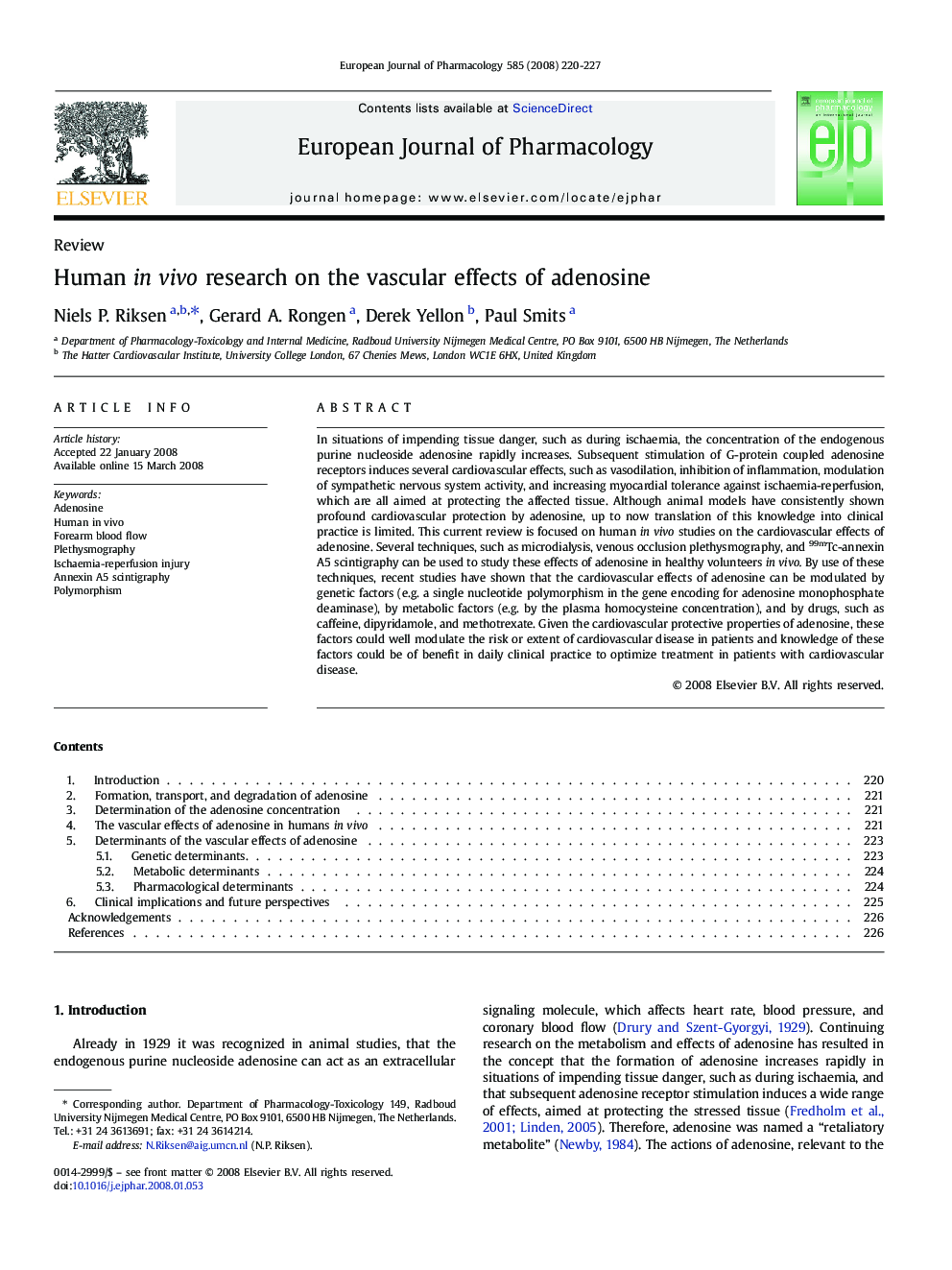| Article ID | Journal | Published Year | Pages | File Type |
|---|---|---|---|---|
| 2535137 | European Journal of Pharmacology | 2008 | 8 Pages |
In situations of impending tissue danger, such as during ischaemia, the concentration of the endogenous purine nucleoside adenosine rapidly increases. Subsequent stimulation of G-protein coupled adenosine receptors induces several cardiovascular effects, such as vasodilation, inhibition of inflammation, modulation of sympathetic nervous system activity, and increasing myocardial tolerance against ischaemia-reperfusion, which are all aimed at protecting the affected tissue. Although animal models have consistently shown profound cardiovascular protection by adenosine, up to now translation of this knowledge into clinical practice is limited. This current review is focused on human in vivo studies on the cardiovascular effects of adenosine. Several techniques, such as microdialysis, venous occlusion plethysmography, and 99mTc-annexin A5 scintigraphy can be used to study these effects of adenosine in healthy volunteers in vivo. By use of these techniques, recent studies have shown that the cardiovascular effects of adenosine can be modulated by genetic factors (e.g. a single nucleotide polymorphism in the gene encoding for adenosine monophosphate deaminase), by metabolic factors (e.g. by the plasma homocysteine concentration), and by drugs, such as caffeine, dipyridamole, and methotrexate. Given the cardiovascular protective properties of adenosine, these factors could well modulate the risk or extent of cardiovascular disease in patients and knowledge of these factors could be of benefit in daily clinical practice to optimize treatment in patients with cardiovascular disease.
